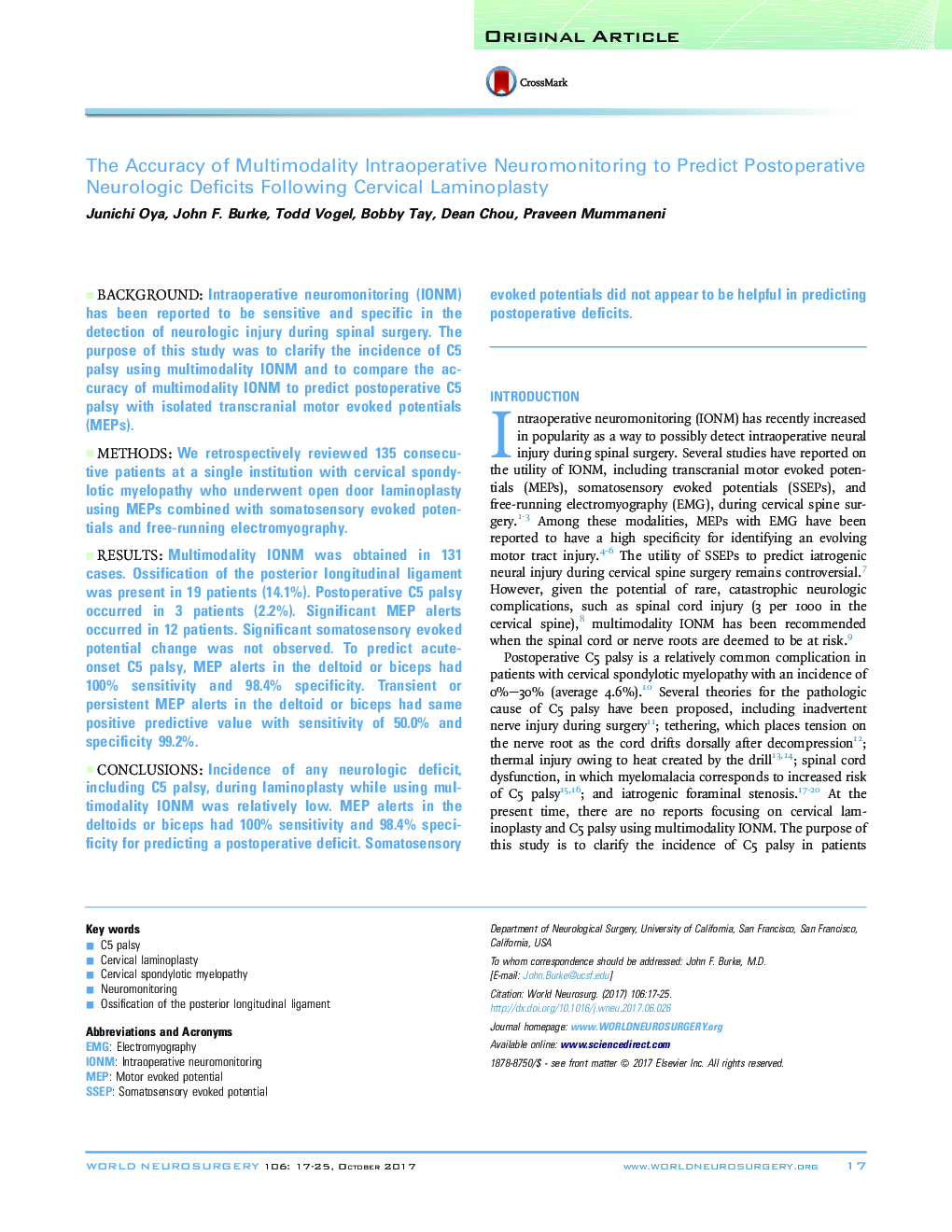| Article ID | Journal | Published Year | Pages | File Type |
|---|---|---|---|---|
| 5633961 | World Neurosurgery | 2017 | 9 Pages |
BackgroundIntraoperative neuromonitoring (IONM) has been reported to be sensitive and specific in the detection of neurologic injury during spinal surgery. The purpose of this study was to clarify the incidence of C5 palsy using multimodality IONM and to compare the accuracy of multimodality IONM to predict postoperative C5 palsy with isolated transcranial motor evoked potentials (MEPs).MethodsWe retrospectively reviewed 135 consecutive patients at a single institution with cervical spondylotic myelopathy who underwent open door laminoplasty using MEPs combined with somatosensory evoked potentials and free-running electromyography.ResultsMultimodality IONM was obtained in 131 cases. Ossification of the posterior longitudinal ligament was present in 19 patients (14.1%). Postoperative C5 palsy occurred in 3 patients (2.2%). Significant MEP alerts occurred in 12 patients. Significant somatosensory evoked potential change was not observed. To predict acute-onset C5 palsy, MEP alerts in the deltoid or biceps had 100% sensitivity and 98.4% specificity. Transient or persistent MEP alerts in the deltoid or biceps had same positive predictive value with sensitivity of 50.0% and specificity 99.2%.ConclusionsIncidence of any neurologic deficit, including C5 palsy, during laminoplasty while using multimodality IONM was relatively low. MEP alerts in the deltoids or biceps had 100% sensitivity and 98.4% specificity for predicting a postoperative deficit. Somatosensory evoked potentials did not appear to be helpful in predicting postoperative deficits.
